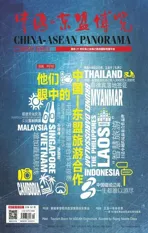Tourism Boom for ASEAN Economies, Buoyed by Rising Middle Class
2017-10-10ByRonCorben
By Ron Corben
Tourism Boom for ASEAN Economies, Buoyed by Rising Middle Class
By Ron Corben
Asia’s tourism industry is booming, buoyed by rising incomes, low-cost air transport, and China’s growing outbound market.
But analysts say the rapid expansion is also putting pressure on infrastructure and destinations amid calls to boost spending and better manage tourism “ fl ows” to ensure long term sustainability.
John Koldowski, a travel industry analyst and lecturer at Thammasat University, said the tourism outlook is strong across several regional markets.
“We’re looking at the big areas at the moment. Thailand is just booming, and it’s continuing to boom; Vietnam is showing some solid growth; Cambodia and Myanmar— although the growth rate is dropping, you can still see a lot of FDI (foreign direct investment), and a lot of construction, a lot more interest and activity going on there,” he told VOA.
The World Travel and Tourism Council (WTTC) forecast tourism’s direct contribution to regional economies will grow by 5.6 percent over the ten years to 2025 to US$528.7 billion. This is 12.6 percent of the region’s national output (GDP).
Tourism among the 10 nation Association of South East Asian Nations (ASEAN) also employs directly or indirectly around 32 million people.
The investment outlook for tourism is also strong, says a report by a senior economist with investment house, CLSA.CLSA pointed to a “feast” of investment opportunities awaiting in travel and tourism, including hotel and resort development along with transportation infrastructure,security and environmental protection.
The Council said spending on travel and tourism infrastructure will be key to coping with demand.
The Philippines is planning to invest US$ 23 billion in tourism infrastructure over the next six years, with the government aiming to double tourism’s contribution to the national economy, presently at 10 percent.
Oliver Lamb, a Sydney-based Paci fi c Aviation Consulting,said regional economic progress has driven tourism growth.The middle class is forecast to grow from 190 million to 400 million people in the coming decade. “The growth of the middle class — the strength of the Asian middle class,the emergence of (air) carriers that are speci fi cally targeted in wealth and well within the Asian middle classes’ needs and low fuel prices — you are getting a perfect storm of positive dynamics for leisure travel in the Asia Pacific,”Lamb told VOA. But Lamb said growth has led to other challenges in aviation, including adequately trained ground personnel, support and infrastructure.
Kuala Lumpur based Association of Asia Pacific Airlines(AAPA) says in 2016 Asia Pacific airlines carried a combined total of 293 million international passengers —up 6.0 percent from a year earlier.
The Pacific Asia Travel Association (PATA) said rapid growth has been evident in aviation, where, by the end of 2019, there are estimated to be close to 11,000 unique city pairs (departure and arrival) operating in the region. This marks a growth of over 20 percent in 2016 fi gures.
PATA says on a daily basis there are some 28,600 regional fl ights scheduled, up from 22,000 in 2012. In key markets,Indonesia reported a 47 percent rise in scheduled flights,Malaysia’s air traf fi c grew 29 percent and rapid growth was seen in Cambodia (52 percent) and Vietnam (75 percent).
The World Travel and Tourism Council said dependence on tourism has been growing, especially with the “spectacular growth” in China’s outbound market. China expanded its“approved destination status” scheme from 14 countries to 113 by 2012, leading to a 700 percent increase in outward visits by Chinese tourists, from 10 million in 2000 to 78 million by 2015, the Council said. Visitors from China account for over a quarter of total international arrivals into Brunei, Malaysia, Thailand and Vietnam — up from fi ve to 10 percent in 2000.

But analysts say while most countries have been eager to promote the China market, other regions, such as South Korea, are looking to diversify this dependence on China.
The Council says Asia — including ASEAN — will account for almost 50 percent of total travel and tourism infrastructure spending between 2016 to 2026.
Vietnam has reported robust tourism infrastructure spending. The council said “Vietnam’s substantial forecast investment suggests its (tourism) infrastructure could pull away from other low income economies(Cambodia, Myanmar and Laos),” all reported to be investing less. The council added that Thailand’s concern lies in infrastructure spending meeting the rising demand.“Thailand is the only ASEAN country where the future focus is critical with respect to tourism and travel infrastructure,” the report said.
Thailand is expected to see visitor numbers rising from 32 million at present to 50 million by 2021, according to analyst Koldowski. But Koldowski said Asia increasingly needs to focus on the management of tourism rather than simply luring more visitors.
“We’re entering a new phase and that phase is where there needs to be maybe a little less focus on attracting tourists because they are coming — the momentum is there — it’s building,” he said. “The focus now shifts to attracting the right sort of tourist.”
“The increasing volume will be such that it will force governments and tourism bodies to actually be a little bit more creative in understanding what does it mean,and what can we do to ensure there is sustainability,” he said.
· Source: www.voanews.com
